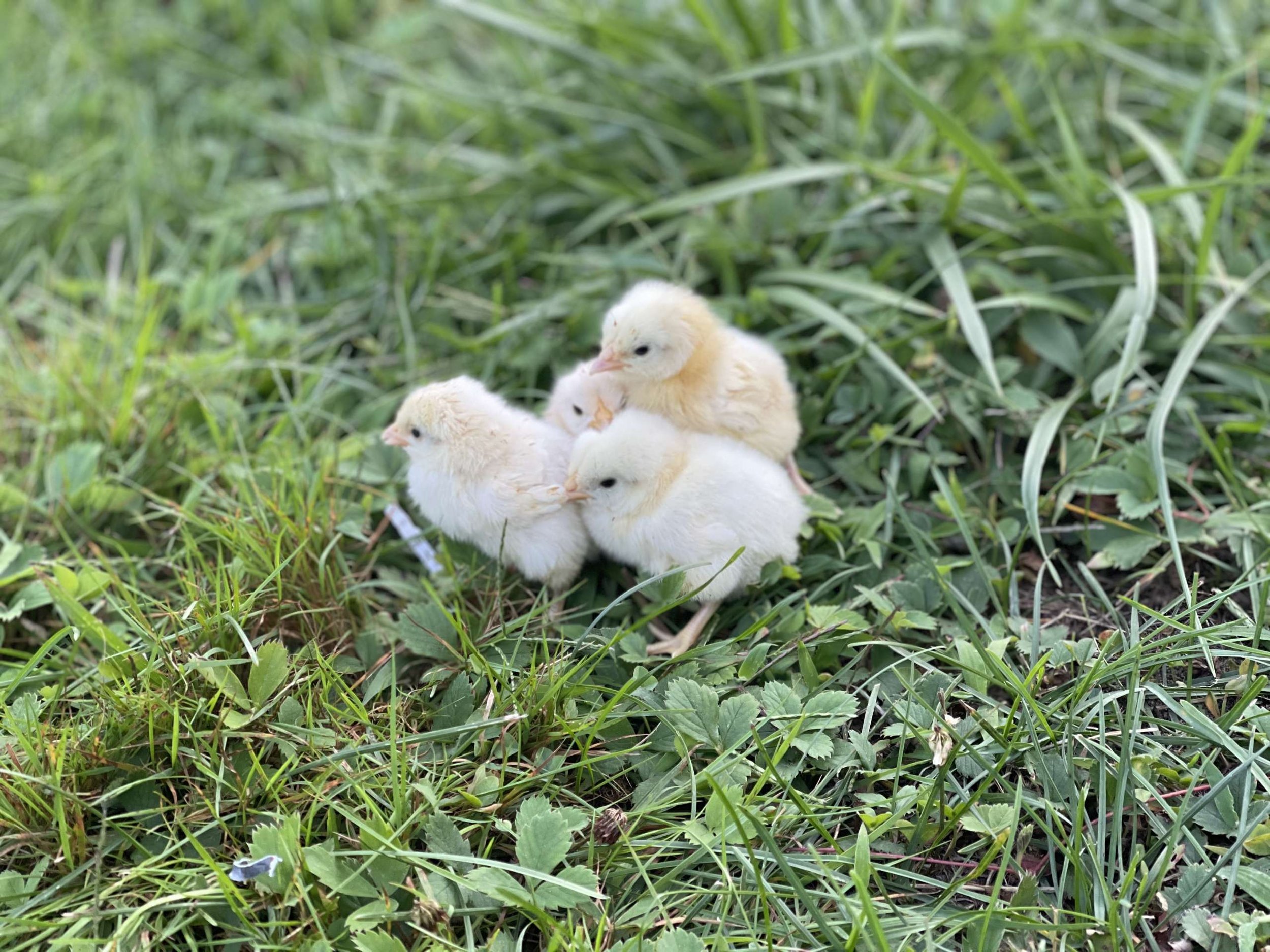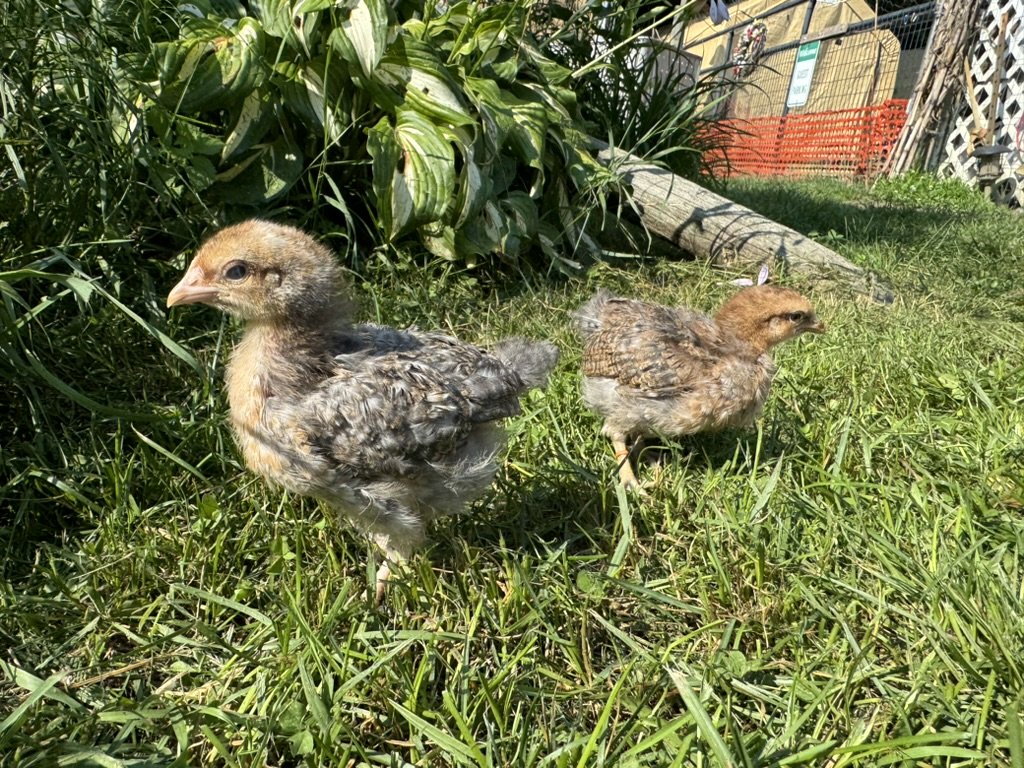Cream Legbar Chicks
Origin: England
Size: 5-7 lbs
Comb: Single
Egg Size & Color: Medium - Blue
Egg Production: 200 per year
Hardiness: Hotter temps
Purpose: Egg, pet
Personality: Curious, friendly, flighty
Free Range: Yes
Rarity: Recovering in Europe
All chicks are Marek’s vaccinated for a healthy start
Origin: England
Size: 5-7 lbs
Comb: Single
Egg Size & Color: Medium - Blue
Egg Production: 200 per year
Hardiness: Hotter temps
Purpose: Egg, pet
Personality: Curious, friendly, flighty
Free Range: Yes
Rarity: Recovering in Europe
All chicks are Marek’s vaccinated for a healthy start

Origin: England
Size: 5-7 lbs
Comb: Single
Egg Size & Color: Medium - Blue
Egg Production: 200 per year
Hardiness: Hotter temps
Purpose: Egg, pet
Personality: Curious, friendly, flighty
Free Range: Yes
Rarity: Recovering in Europe
All chicks are Marek’s vaccinated for a healthy start
-
The Legbar Chicken is a crested, autosexing, chicken that carries the blue-egg gene — laying blue eggs. Legbars are friendly, good foragers, and do well avoiding predators in a free range environment, they can easily adapt to small yards and runs, as well. They are the most sought after chicken in the world! Why do you say? Well, they can be sexed male or female at birth, pretty cool. they have a beautiful barring color pattern. Legbar hens can go broody. These birds do like some additional stimulaton if not free ranged.
Note: this is a high-demand breed and longer wait times will apply
-
The Cream Legbar was presented at the 1947 London Dairy Show as a new breed of cream colored autosexing chicken, friendly in temperament, and prolific layer of blue eggs. The recessive nature of the cream color, the dominate blue egg color, and the crest which sets this breed apart from its similar Legbar relations was discovered in genetic experimentation performed by Professors R.C. Punnett and Michael Pease.
Professor Punnett received blue egg laying crested Chilean hens from botanist Clarence Elliott in 1929. One of these hens led to Professor Punnett’s monumental discovery of the recessive cream color in poultry in 1931. Professor Punnett experimented with these birds at the University of Cambridge to create crested blue egg layers with the heartiness, production, plumage pattern, and type of the Danish Brown Leghorns he used, except with cream replacing the gold coloring.
Later Professor Pease performed his own breeding experiments using Gold Legbars and an inbred UK type White Leghorn from Reaseheath College in Cheshire, England, which also resulted in a number of cream colored birds.
Professors Pease and Punnett bred their cream birds together to see if they had stumbled upon the same cream gene, proving it upon the hatching of all cream offspring. Descendants of these birds were selected for straight single combs, crests, production blue egg laying, and the remarkable autosexing feature that allowed the sexes to be identified at hatch. These qualities were stabilized by 1947, and The Poultry Club of Great Britain adopted a written standard in May 1958.
-
We recommend starting baby chicks out with Sugar Feather Farm chick starter for the first 3 weeks, then switch to our Chicken Grower. Use the Grower Feed until they hit maturation (which is when they start to lay) then switch to Sugar Feather Farm Adult Feed.
We highly recommend using the Oil of Oregano in their water daily as a supplement to aid with digestion and overall health.































































